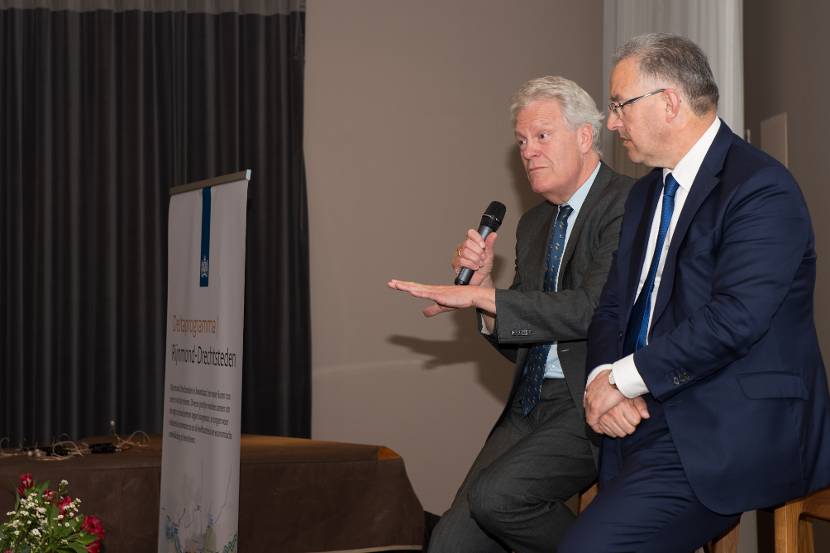Rhine Estuary-Drechtsteden regional conference: implementation of preferential strategy up to steam
On 18 April, more than 130 stakeholders attended the Delta Programme Rhine Estuary Drechtsteden Regional Conference in Dordrecht. The conference marks over a year and a half of work on the implementation of the Rhine Estuary Drechtsteden preferential strategy, which has been drawn up in collaboration with the regional partners in this area. The strategy has been endorsed in the Delta Programme 2015.
Mayor Aboutaleb of Rotterdam, Chair of the Rhine Estuary Drechtsteden Administrative Regional Consultative Body, opened the conference. He called on the audience to keep a continual focus on water awareness, not only among administrators, but among residents as well.
The members of the Regional Consultative Body subsequently made a pitch that highlighted the importance of early linkage of taskings and continued concerted action.
Five sub-sessions, focusing on “multi-layer flood risk management”, “looking beyond the dykes”, “flood risk management outside the dykes”, “third layer”, and “the phase following the pilot”, provided the participants with more information and enabled them to weigh in on the steps to be taken for the future.
The Delta Programme Commissioner and Mayor Aboutaleb concluded the day with an inspiring interview, with input from the conference participants. ‘Rhine Estuary Drechtsteden is a fascinating area with a great many issues: salinisation, flood risk management, and pluvial flooding. This is where the river and the sea meet. The region is energetically tackling the issues, but we do need to keep up the pace in order to avoid problems. Here, under the direction of Mayor Aboutaleb, and at the national level under my direction,’ Delta Programme Commissioner Wim Kuijken commented.

With respect to the Sluices plan, the Delta Programme Commissioner stated that this ties in perfectly with the preferential strategy adopted for the region, because it keeps open the long-term options for either an open or a closed Waterweg. In 2040, when considering the future of the Maeslant storm surge barrier, or as much earlier as needed on account of, e.g., an unexpectedly rapid rise in sea level, this plan could constitute a straightforward component of the choices to be made. According to Mr Kuijken, currently there is no need for such a major intervention in the system.
Ina Konterman, Rhine Estuary Drechtsteden programme manager, was quite pleased afterwards: ‘The underlying goal of the conference – informing and meeting one another, weighing in, joining forces and committing to the follow-up – has certainly been achieved. This provides a good basis for us to continue working together on safeguarding flood risk management and securing the availability of freshwater in this densely populated and economically important region.’